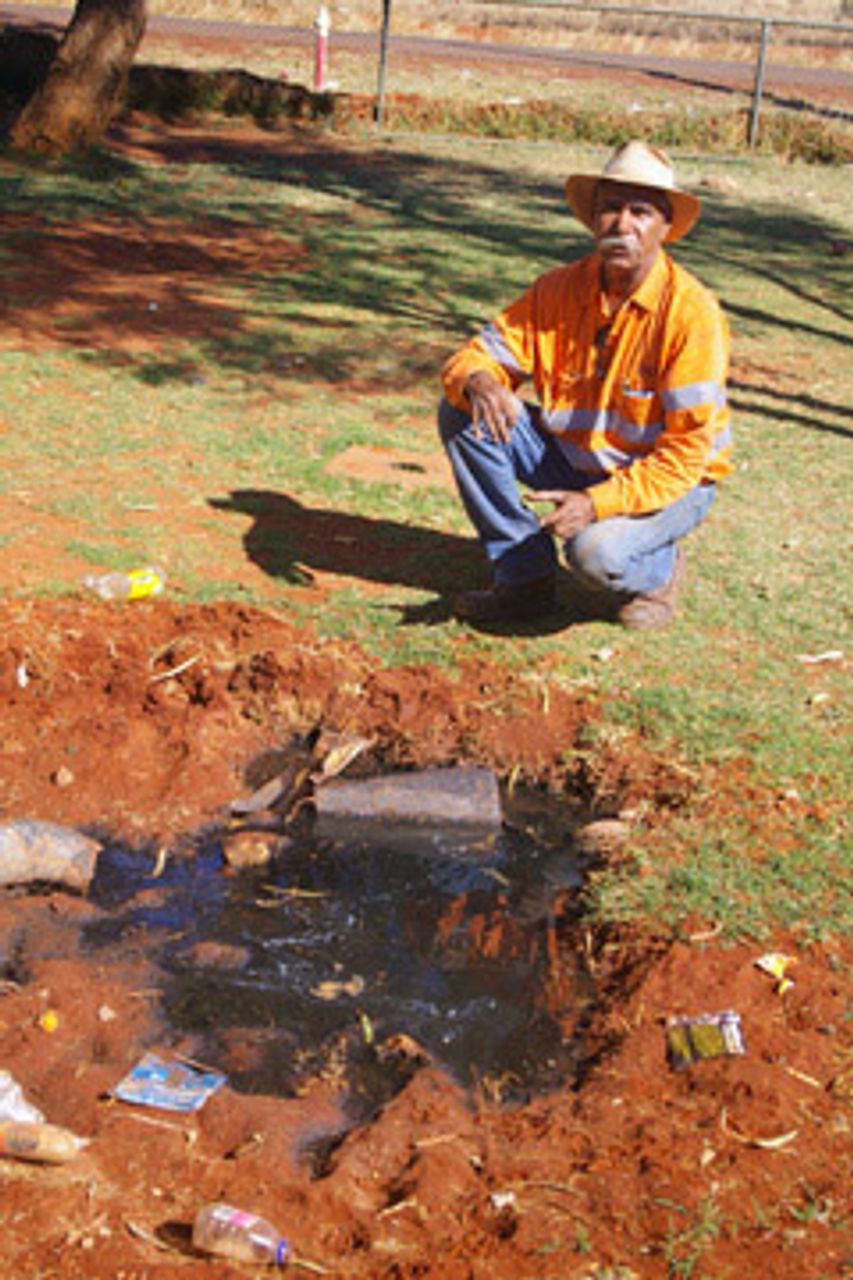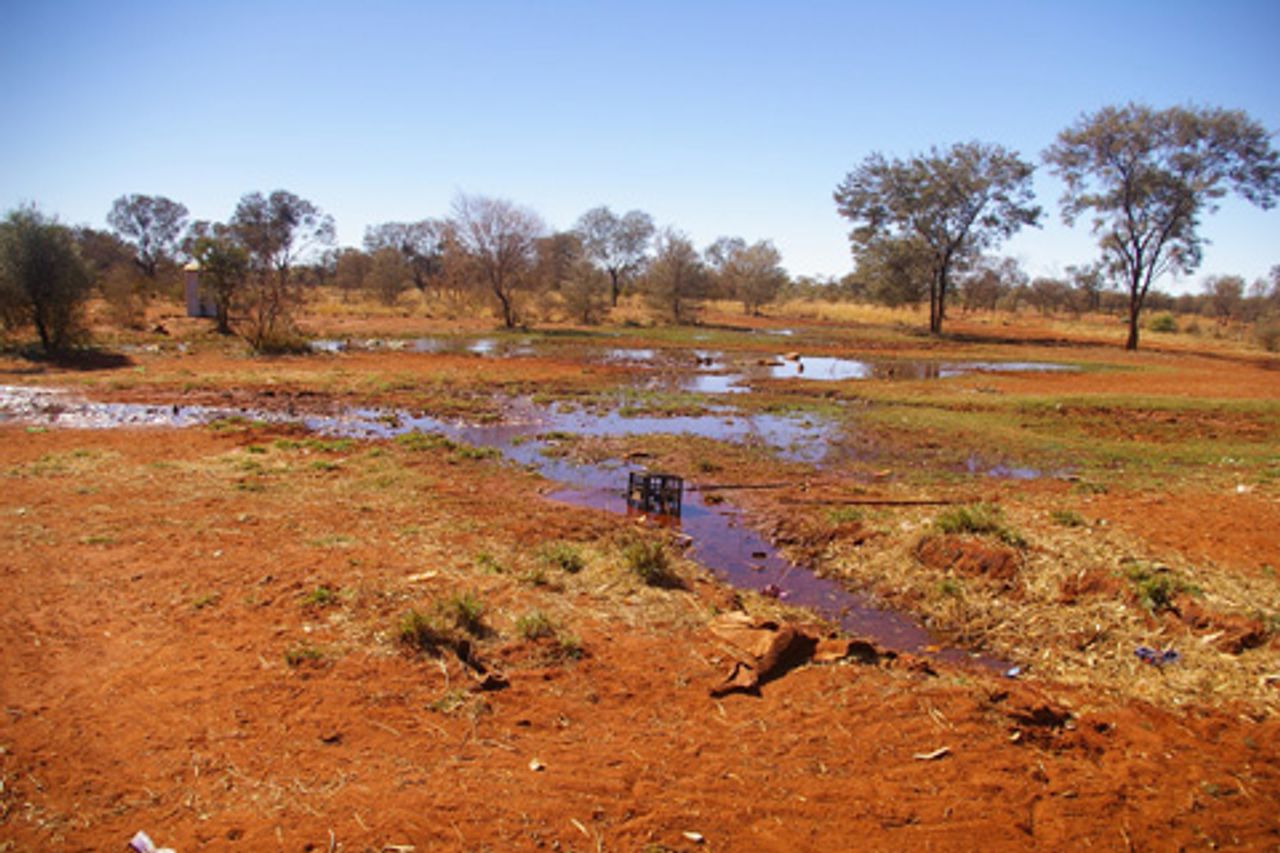About 100 residents from the remote Aboriginal community of Ampilatwatja walked out of their settlement last month, protesting both the intolerable housing conditions and the so-called Northern Territory Emergency Response (NTER) or “intervention”.
Ampilatwatja, with a population of 450, is more than 320 kilometres north-east of Alice Springs in the central Australian desert region of Utopia. It is one of the many remote communities that were taken over by the federal government as part of the “intervention” launched by the former Howard government in 2007 and extended by the Labor government of Prime Minister Kevin Rudd.
Initiated on the false pretence of trying to protect Aboriginal children from sexual abuse, the “NT Emergency Response” saw soldiers and police mobilised to assert control over settlements and town camps across the Territory—many of which occupy potentially valuable mining, pastoral or tourism land. Residents have been subjected to discriminatory restrictions, including “welfare quarantining” or “income management,” which involves replacing social security benefits with food and clothing vouchers.
Earlier this year, the Rudd government and its NT Labor counterpart deepened the pro-business intervention by freezing funds to remote settlements and providing basic services to only 20 larger townships, designated “economic hubs”.
The Ampilatwatja protestors, including Alyawarr Aboriginal elders, are calling for better living conditions and an end to the NT intervention. Outmoded and inadequately maintained septic tanks and chronic overcrowding—some of the houses are tin sheds—have led to raw sewerage overflows in several homes, creating ongoing health problems.
Angry at both the federal and NT governments, residents have set up camp four kilometres from Ampilatwatja, on traditional land. The protestors say they will maintain their action indefinitely and are calling on other Aboriginal communities to follow their lead and walk-out.
 Richard Downs
Richard DownsOn July 16, Richard Downs, a spokesperson for the community, wrote a letter, co-signed by dozens of residents, to federal Indigenous Affairs Minister Jenny Macklin, requesting a meeting to discuss their concerns. A week later, Macklin announced to the media that there would be no new housing for Ampilatwatja. The government, she said, was concentrating new housing in 15 communities with “severe overcrowding” and “high population growth”.
Macklin’s announcement followed a report from the Australian Productivity Commission revealing a list of shocking social statistics in Aboriginal communities. One of the report’s key findings was the overcrowded and totally inadequate state of Aboriginal housing. The worst situation was in the Northern Territory, where 65.9 percent of indigenous houses were overcrowded.
In February 2008, Rudd delivered a parliamentary apology speech to Aboriginal people for past wrongs, and launched a federal housing commission, with the claim that this would overcome the crisis in Aboriginal housing. Last month, it was revealed that not one house had since been built in NT Aboriginal communities
Last week the WSWS interviewed the Ampitwatjala spokesperson, Richard Downs.
Susan Allan: What was the issue that instigated the community walkout?
RD: The place is a disgrace. There has been nothing done on the communities since the intervention. Our people have been isolated and pushed away, not allowed to be involved in any discussions. We see all these government agencies and bodies coming and going, but to no result, so what’s the use of living in a community where the government has a five-year lease and does nothing?
The housing is really bad—some of our houses are just tin sheds—the sewerage in these places is 20 to 25 years old. It’s probably six years since any new housing was built. There is no planning; everything is completely ad hoc.
Residents who live in the tin houses pay $25 per person a fortnight for rent. It is possible, with many people staying in your house, you could pay up to $200 or more per fortnight. The overcrowding is so bad that some young people stay with extended families, sleeping where there might be some available space.
We did have a sewerage truck here a few years ago, which was staying on top of things to pump it out, but in the last 12 months there has been no sewerage truck and the Shire council has let it build up to such an extent that it starts overflowing. Then it is mad panic to get someone out here to pump it out and then if you can’t get the plumber out, you have to wait three or four days or a week.
 Sewage overflow at Ampilatwatja
Sewage overflow at Ampilatwatja
In the brick houses there might be 2-3 bedrooms with 12 to 17 people living there. There are lots of issues coming up with the overcrowding with so many family interactions. Someone in the family might get flu and then everyone gets it. You have scabies and other illnesses that never heal—they just keep passing around.
Even though we have a health clinic, it is very short-staffed. The clinic says all it is doing is bandaid treatment. There needs to be a lot of preventative programs. There should be education and awareness programs happening all the time and none of that is happening under the intervention.
There are all sorts of environmental problems, there is rubbish everywhere, there are dogs running around. At least before the intervention there were programs to clean up the community, to look at the health issues and the housing issues.
SA: What is the historical background to your community?
RD: We were forced from our traditional lands in 1910. We were continually on the move because pastoral stations were not happy having indigenous tribes near their main watering points for cattle and horses. The stations we were moved from and onto were Argadargada, Lake Nash, Georgina Downs, then back to Amarroo and onto McDonald Downs.
In late 1960, our people returned to Amarroo station to settle on the Honeymoon bore, which was part of a cattle stock route. Around 1976, we were given a small excision on parts of the stock route, 3-4 kilometres north-west from the Honeymoon bore, which became the community of Ampilatwatja.
SA: What is the overall attitude to the intervention among residents?
RD: We are not happy; it has achieved nothing. There might be some sort of achievement for an individual with the income management, certain families maybe, but people overall are so disappointed. Many people think of the old days when we were forced to work for sugar and flour—for them the intervention is no different.
Our people are demoralised and hurt; we feel like outcasts. In the intervention all the men are categorised as sexual abusers, rapists and murderers. All the blue signs that they have put up outside our communities—that there is to be no alcohol or pornography—this is just embarrassing. We are being victimised and put down. In the rest of society you have the same issues and problems but no signs are put up—it’s just the black communities.
With the intervention our store was taken over. Before, the store was operating as a business for the last 20 years. It sort of paid its own way, and the extra money we made was put back into the community for aged-care and sporting facilities, ceremonies and funerals and so on.
There is no community control. When they [the government] first came in, they came in with the army to intimidate people. They said we have control and you have no say—you will do as we tell you. We thought, ‘what have we done to deserve this’? Maybe some might neglect their children—but not many.
The young people saw that the elders no longer had any power. They resent this and don’t want to be a part of this controlled way. A lot of them are drifting out of the communities into the towns and caught up in a cycle of drugs and alcohol abuse. They get caught in a rut and there is no way out for them. They are too ashamed to go back and face their families, so they stay in town and continue on.
SA: What do you think of government and media claims that Aboriginal people are healthier since the intervention?
RD: This is all government tactics. Even at the Council of Australian Governments [COAG] meeting in Darwin they had to admit that the gap [between indigenous and non-indigenous health] is widening, not closing. All the government is doing is trying to convince the public to continue with these measures.
This week the NT Emergency Response consultation group visited us. This is really a formality to say that they have consulted with indigenous people. It is really all hot air and promises, when the government has already made up its mind what it will do.
SA: Earlier this year the NT government announced a new policy where funds will be frozen to homelands in favour of financing 20 economic hubs?
RD: This is wrong too. The homelands were established on traditional country for those people—if they are closed down and people are forced into one hub you are going to create a ghetto. There will be so many people there and they are going to be exposed to drugs, grog and more abuse. There will be fights, arguments and more fatalities.
This policy is just another way to close down the close-knit groups—and the traditions and customs of different groups. While people are living on the homelands they are sort of independent, they are with their people, they are on their country and they are speaking their language.
SA: What do you think is behind the agenda motivating the NT intervention?
RD: I’m not sure but I think the black people of the Territory are being used like guinea pigs. I think that if it works here, the government is looking to expand this right across Australia to all people.
When the government announced the intervention they wanted to focus the attention away from the weapons of mass destruction, which was the lie in the Iraq war. They wanted to focus away from the Howard government’s children overboard scandal, which was also lies, and all the boat people—where the government locked up children and families, refugees, for two or three years or more. So the intervention was a good way of turning the public away from all these other issues.
SA: What is the attitude of Aboriginal people to the Labor government?
RD: Aboriginal people are definitely turning against the Labor government. In the “sorry” speech, Rudd said he was going to close the gap. When they came to power there were many expectations—that all of us would come together, going forward.
We, the Aboriginal people, were waiting to see what Rudd would do with his government’s review of the intervention policy. What they have done is stick with the Howard government’s policy, which Labor supported in the first place.
